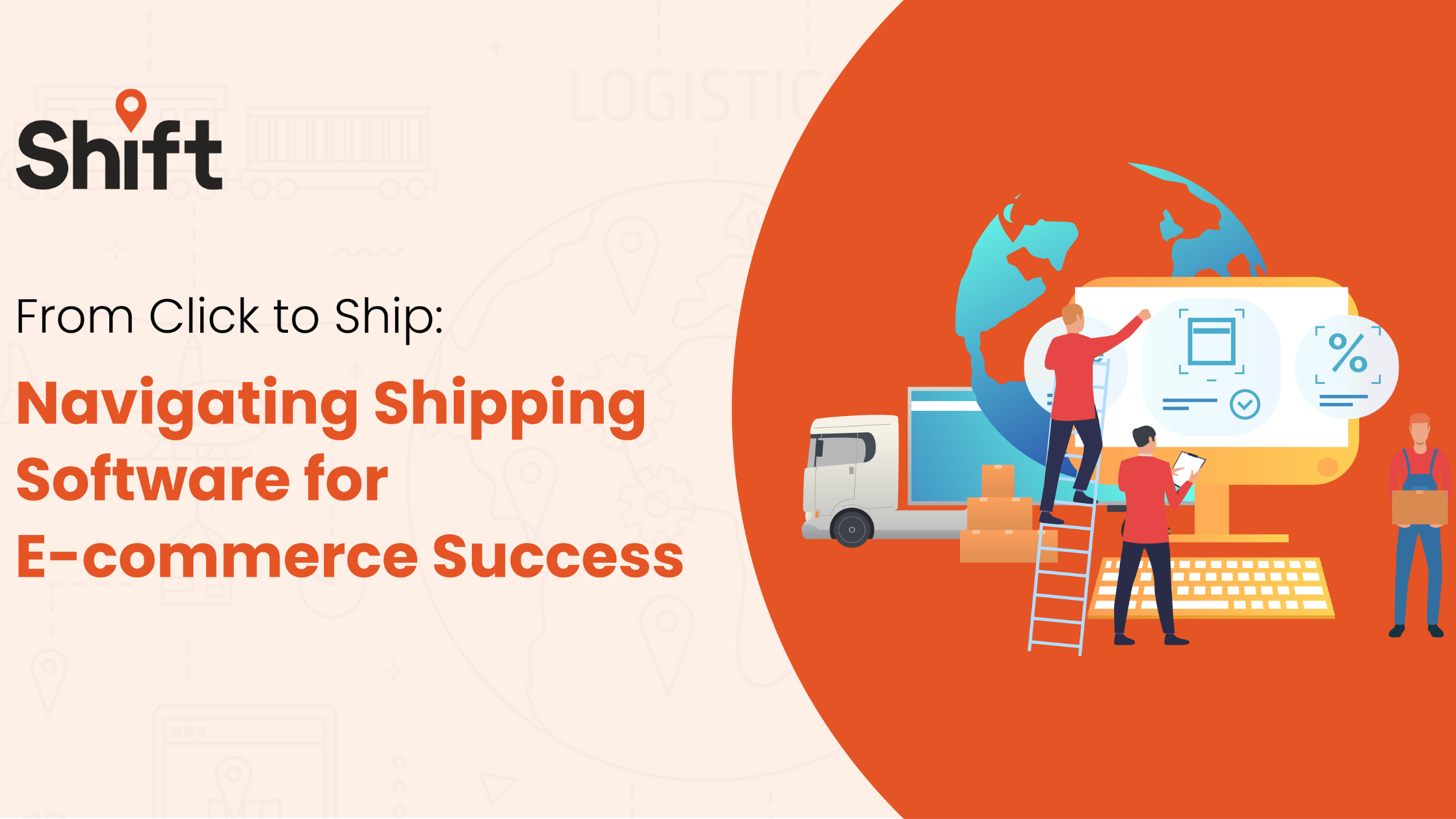From Click to Ship: Navigating Shipping Software for E-commerce Success

E-commerce today requires the ability to manage the journey from click to ship. It’s not a
logistics need, but a competitive advantage. Shipping software is a key tool in streamlining this
process. It solves the many challenges of manual order fulfillment. It connects with e-commerce
platforms.
This connection improves efficiency and customer satisfaction. This blog explores the
key parts of shipping software. It covers its features, benefits, integration capabilities, and best
practices for use.
Introduction to Shipping Software
Shipping software automates the order process. It lets businesses manage shipments from the
warehouse to the customer’s doorstep. It makes tasks simpler. These tasks include creating
shipping labels, tracking orders, and managing returns. It provides a single platform. This
platform works with many Shipping Partners and e-commerce systems.
Challenges of Manual Order Fulfillment Processes
Manual fulfillment processes have many challenges. They include time-consuming tasks, errors,
and scalability issues. These inefficiencies can cause: – incorrect shipments and delays. They
also make it hard to track orders. This raises costs and lowers customer satisfaction.
Features and Benefits of Shipping Software
Shipping software offers many features. They design solutions for manual fulfillment problems.
Key features include making shipping labels. It also includes real-time tracking, integration with
carriers, and customizable shipping preferences. The benefits of adopting shipping software are
large:
- Efficiency and Speed: Automation reduces the time spent on order processing.
- Cost Reduction: Access to carrier rate comparisons ensures cost-effective shipping options.
- Scalability: The software can handle increased order volumes without the need for more manual intervention.
- Enhanced Customer Experience: Customers enjoy quicker delivery times and the ability to track their orders in real-time.
How Shipping Software Integrates with E-commerce
Platforms
A simple setup can provide good value. It streamlines all the processes. It enables automatic
order syncing and inventory management. This seamless connection allows businesses to start
shipping right away. They can start when they get an order. It makes the process faster and
more efficient. Also, managing many sales channels at one place gives insights. It shows how
sales are doing across every channel and what customers likes. It also shows the value of each
channel. This setup helps make decisions based on data.
Best Practices for Choosing and Implementing Shipping Software
Picking the right shipping software involves assessing your needs. You must consider
integration, scalability, and customer support. Implementation of best practices includes: setting
clear objectives. You must also ensure seamless integration with your e-commerce platform.
And, you must train staff to maximize the software’s benefits. Testing the software through a trial
can also help see if it works with your operations.
Conclusion:
Try Shift Today to experience the leading shipping software. Shift has unified sales channels
with major e-commerce platforms in one place. These include Flipkart, Amazon, Shopify,
Magento, WooCommerce, and Wix.
We have also tied to top shipping partners to offer discounted rates. These include Amazon Shipping, Delhivery, Ecom Express, Xpressbees, Bluedart, Shadowfax, and Smartr Logistics. Shift covers more than 19,000+ locations in India.
They offer faster deliveries to ensure your products reach every corner. Shift offer a complete
solution for your shipping needs.
Reach Us At
Corporate Address
5th Floor, Vijay 66 North, Jubilee Enclave, HITEC City,Hyderabad, Telangana 500081
About Company
© 2024 Shift Logistics Private Limited all rights reserved